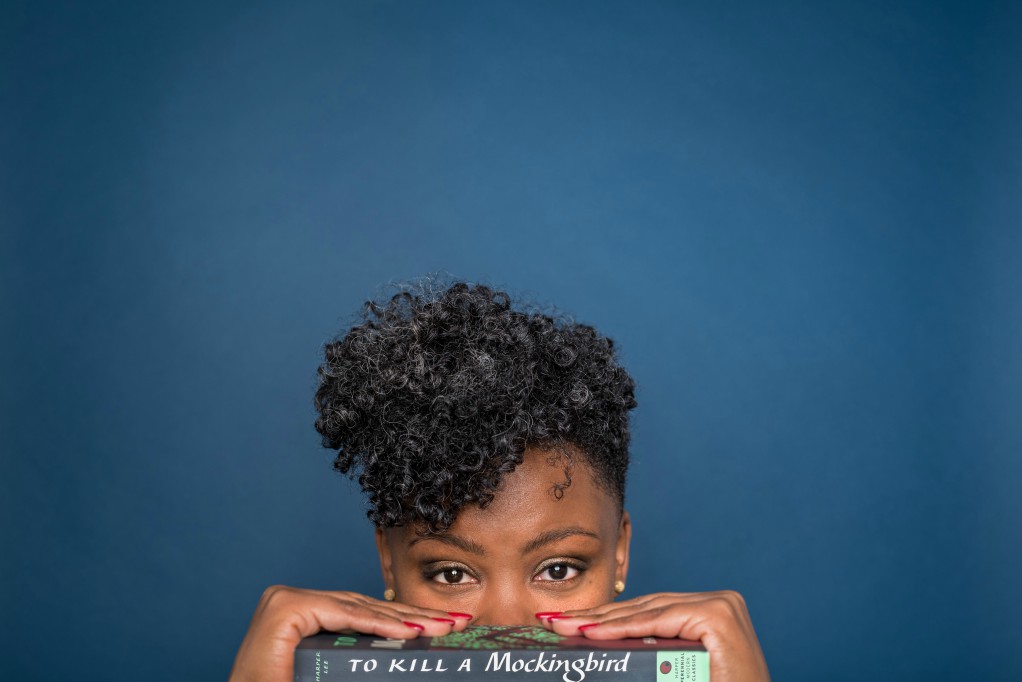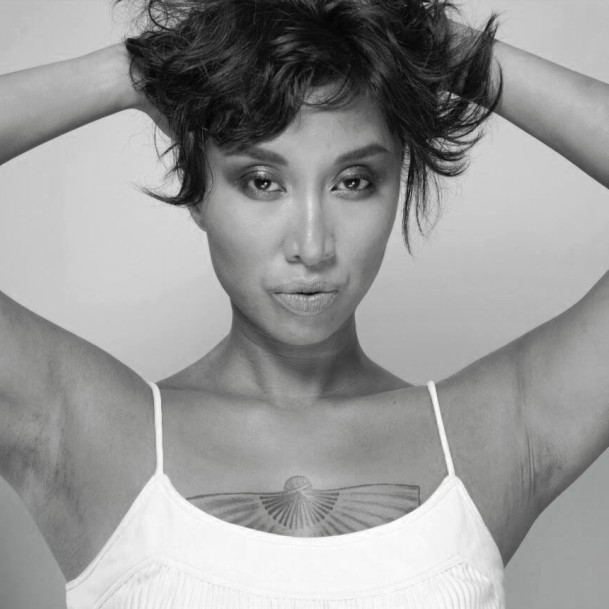Breaking Character
It is often said that writers “breathe life into their characters.” Sadly, I feel that my writer colleagues who possess race privilege have been more likely to engage in character origami: folding paper to and fro so it appears three dimensional when, in fact, it’s something that’s just plain flat. There is nothing that brings out our inner demons more than putting pen to paper. All of the ways we oppress others are enacted through how we build our characters and their interactions. People of racialized backgrounds become props, become the butt of a joke, become caricatures.
A bit of background about me and why I may seem more like a prickly thorn than a peaceful olive branch: besides being a theatre practitioner and novelist, I am a queer brown woman, radical mother, and activist, and I was the owner of a home daycare for many years until I became the incoming artistic director of b current performing arts. My perspective is shaped by a society that has literally raped, impoverished, and shamed me until I was brave enough to live a life of activism and critical thinking. And having worked as a child and youth educator since I was fifteen, I am fueled by the rage one has after fighting upper class folks for fair wages while tirelessly parenting their children.
It is with these life experiences that I am frequently asked to facilitate discussions and workshops with fellow artists about how to conduct research and write without further oppressing oppressed communities. When I do these workshops I am very clear with colleagues that I am not an expert in progressive artistic practice. Rather, I am sharing my journey of allyship, mishaps and all.
The journey continues, this time with Calpurnia, the project I am co-producing alongside Nightwood Theatre. Audrey Dwyer’s play is ending my company Sulong Theatre’s decade-long career of creating work by and about women of colour by exploring the intricacies of allyship. The play is about a wealthy Jamaican-Canadian screenwriter named Julie, who wants to adapt the novel To Kill a Mockingbird from the point of view of the novel’s Calpurnia, the Black maid. Due to Julie’s privilege and disconnection to mammy culture, she seeks the help of Precy, her long-time Filipina caregiver. Julie’s racist misstep in bridging the gap between privilege and servitude is not so much a misstep but a jaw-dropping, cringe-worthy blunder.
Audrey is also a performer, and she has played a number of caregivers throughout her twenty-year career. In one case, she portrayed a maid who was completely silent during a racial tirade towards her; a cast member later told her they felt her character was powerful because she was silent. “As an actor who has many different impulses to speak throughout that tirade but not given the words by the playwright, I was curious as to why [my fellow cast member] felt that these characters were powerful when silent. That sparked a question in me as to why these women were often silent in theatre or film,” says Audrey, who is also directing the production. This led her to research mammy culture, where she realized the one-dimensional nature of Black mammies in media stemmed from the desire for white folks to feel empowered despite no longer having the legal right to own slaves. The depictions of the Black mammy as farcical caricatures devoid of desire kept these individuals disenfranchised and powerless.
When authors are inspired in this way, they tend to veer off track and into the vicious cycle of whiteness. We have an idea, which uncovers a chapter of history or an interesting story we hope to dramatize. This may range from a simple exploration of the intricacies of family life to more acute political works involving injustice that may include characters from cultures that are not our own. We think that with a little research and a unique angle, that’s as far as we need to go when it comes to shaping characters.
Not so.
I believe that the next step following inspiration is to look within. For example, for Sulong Theatre’s inaugural work Future Folk, we collectively created a play in which the audience was given the chance to live out the realities of the notorious Live-in Caregiver Program, where caregivers are left vulnerable to abuse during their twenty-four months of service to Canadian families, just for the chance of permanent residency status in Canada. In order to create this work responsibly we had to ask ourselves:
- What privileges do I have in this world? I had to admit to myself that despite being Filipina and a caregiver, I was born in Canada and did not have to worry about risking my residency status.
- Is this story for me to tell? I understood that my privilege allowed me and my other collective members the ability to share the stories of caregivers to audiences. If we knew we were taking away a community’s chance to express this same story themselves, we would not have produced it.
- Are we respectful to a community’s needs, and how are we compensating them? In order to create Future Folk we had to interview dozens of Filipino caregivers. I thought that if we had a one-day event with food, this would give us the research we needed. We were ignorant to the fact caregivers’ days off shift or can be cancelled, if they are given days off at all. We had to change our strategy and outreached, one at a time, at random hours. And to compensate for their time, we gave them a free performance during our run. That matinee performance, scheduled specifically for the caregiver community was glorious and they felt affirmed in their experiences.
Audrey has been just as thorough with her work in Calpurnia. Part of her in-depth research was to interview several people who worked as caregivers and servants, including members of her own family.
Her journey into genuinely “breathing life into characters” has not been without its bumps, and each of those bumps has been revealing of the politics in today’s theatre industry, with its difficulty believing that a Black family can be portrayed as wealthy and the employers of a Filipino caregiver. “I’ve had a lot of feedback from people who have felt that Black people don’t behave this way,” says Audrey. “But If we can believe in movies or books that dragons can talk, I think we can consider all the ways in which Black people live.”









Comments